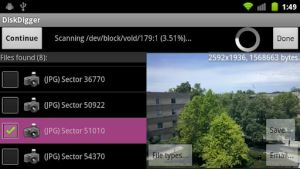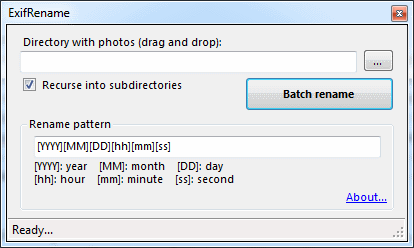During a recent friendly debate with some religious acquaintances, I was asked if I could name any arguments for the existence of a god that actually seem “plausible” to me on any level. Suffice it to say that none of the standard religious arguments are in any way convincing, given a moment’s thought. However, there is a relatively recent argument that’s been gaining popularity over the last few years, and it requires more than a trivial amount of effort to dismiss. This is the argument from fine-tuning.
In case you’re not aware of the argument, it takes the following form:
Take any physical constant that we know of (e.g. the coupling constant of the strong nuclear force, the cosmological constant governing the expansion of the universe, etc). If that constant had been a fraction of a percent different, then life wouldn’t exist (or star formation wouldn’t be possible, or the universe would collapse back in on itself, etc). Therefore, there must have been some intelligent agent who created the universe with the precise physical constants needed for stars and planets to form, and for life to eventually arise.
There’s no denying that it sounds like an interesting, even powerful argument. In fact, some people with whom I’ve recently spoken claim this as the most compelling argument for their continued belief in a god.
Well, let’s analyze this argument carefully, and see why it, too, ends up being less than convincing.
To begin, the universe isn’t exactly overflowing with life. The universe is more than 99.99% empty space. Most of our solar system is completely uninhabitable, except for a small rocky planet that is on a constant knife-edge of environmental stability, and is just one asteroid away from mass extinction. It certainly doesn’t appear like the universe was created with us “in mind.” If anything, our presence in the universe is an infinitesimal smear polluting a stupefyingly vast nothingness. Some “design,” wouldn’t you say?
I might be willing to believe in the fine-tuning argument if we had discovered that there was no universe beyond the Earth, and that the sky was just a canopy above the Earth with the stars being points of light on the canopy.
This should sound familiar: it’s what we believed two thousand years ago, before we learned better.
So it seems like the desire to believe in the fine-tuning argument is a throwback to the pre-scientific need to feel special, and to cling on to the infantile philosophy that the universe is made specially for us. But we know that every lesson that we’ve had from science over the last 500 years has been a lesson in humility. With each discovery in physics or astronomy, we find that we’re less and less special.
It’s a bit of a straw man argument, as well, and it also smells of the “god of the gaps” fallacy. It’s saying that just because physicists don’t yet understand where Constant X comes from, it must have been designed by a supreme designer.
Just because an “unexplained” constant exists in physics doesn’t mean that it’s free to be adjusted. No one brings up an argument like, “if π was equal to 3 instead of 3.14…, then mathematics wouldn’t be possible.” It’s meaningless to change the value of π, because π simply represents a geometric relationship between circles and diameters. In other words, the value of π is not a degree of freedom for the universe. The same could very well be true for many of the physical constants which we haven’t explained yet.
At the same time, it’s possible that there are many other universes apart from this one, where physical constants are in fact different, and we’ve simply won a lottery of universes by being born in this one, just like we’ve won a lottery of planets by being born on this planet, and not another similar planet in a distant star system.
The more basic point I’m approaching here is that physicists don’t yet have an explanation for a great many things. We’ve only had quantum mechanics for less than 100 years. We don’t have an explanation for the expansion of the universe. We haven’t unified all the forces yet. We’ve only unified electromagnetism and the weak nuclear force 40 years ago. So it’s extremely premature to say that we know anything about these constants in any deeper sense than “they exist.” And it’s absolutely presumptuous and unwarranted to say that not only do you have a deeper understanding of the physical constants than all physicists in the world, but that you have specific knowledge that a designer-god tweaked some knobs to make the constants the way they are.
We’re in no position to make any judgment about this, given the state of our current knowledge of actual physics. And anyone who claims to have special knowledge about where the physical constants come from deserves suspicion by default.
Lastly, even if we suppose that the fine-tuning argument suggests some kind of god, the only type of god it can possibly be is a sort of Deistic god; a god who might have “created” the universe and left it alone. In no way does it suggest a god who intervenes in people’s lives or answers prayers, and it’s certainly not an argument for the god of the Bible. It takes just as much work to go from a Deistic god to a prayer-answering god than it does from no god at all.
So, to summarize, we don’t know where some of our physical constants come from, or why their values are what they are. Or rather, we don’t know yet. But the point is that it’s okay not to know! Not knowing is the driving force behind every facet of human inquiry. Perhaps one day we might discover that the universe really was built by an intelligent designer. But that discovery will be made with the same scientific rigor as all discoveries before it, instead of being built upon holes in our current knowledge.
The fine-tuning argument is therefore precisely that: an argument that depends on lack of knowledge. I submit that this realization by itself should disqualify the argument from honest use in debates. It should also disqualify the argument from being a plausible reason for belief in a god.
 I’m happy to announce that DiskDigger is now available for Android devices (phones and tablets running rooted Android 2.2 and above)! You can get the app by searching for it on the Google Play Store from your Android device. Please note that the app only works on rooted devices.
I’m happy to announce that DiskDigger is now available for Android devices (phones and tablets running rooted Android 2.2 and above)! You can get the app by searching for it on the Google Play Store from your Android device. Please note that the app only works on rooted devices.